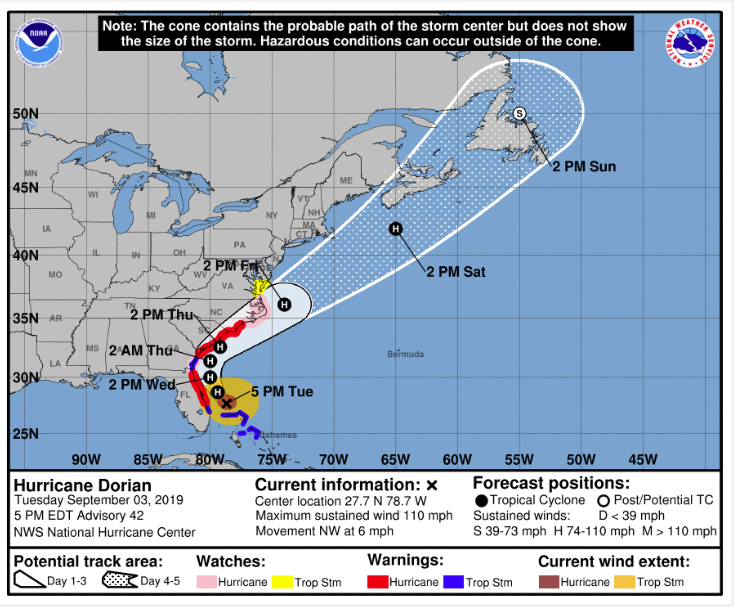Air cargo delivering in times of crisis

In times of natural disasters, air cargo is often the only way to respond quickly enough to move food, first aid supplies and other necessities into hard hit areas. Drones are also being utilized to assess damage, for search and rescue operations and to drop small packages of food, water and medicines into hard-to-reach areas.
As Hurricane Dorian skulks along the eastern coast of the United States after stalling over the Bahamas, preparations are quickly coming together for teams to quickly move into impacted areas to rebuild damaged infrastructure, deliver aid to affected areas, and clean up as necessary.
While a direct hit to the U.S. is no longer expected, Dorian will still deliver flooding, tornadoes, high winds and damage to buildings along the coasts of Florida, Georgia, South Carolina and North Carolina before moving out to sea. Seaports including Everglades, Jacksonville, Savannah and Charleston are either closed or plan to close over the next couple of days as the hurricane moves closer.
Airlines have announced more than 1,400 cancellations in and out of the U.S., with many attributable to the hurricane. Florida airports including West Palm Beach International (PBI), Orlando International Airport (MCO) and Daytona Airport (DAB) have closed ahead of the storm with more airports expected to close as the storm moves northward. Although many of the affected Florida airports are more popular with tourists than cargo, express operations will likely be affected from the Orland closure. Both UPS and FedEx Express have operations at MCO.
Even if the direct impact to airports in the United States is minimal, some airports will likely serve as a springboard for broader humanitarian efforts in the region. Atlanta and Miami airports along with Miami’s seaport will likely be utilized to transport emergency items including perishables such as medicines and food to hard hit areas, particularly to the Bahamas where the storm has dealt a strong punch. According to reports, while the seaport appears intact, Freeport International Airport (FPO) was completely underwater on Monday.
The financial toll resulting from airport closures and flight cancellations adds up quickly, and and every hour counts. IATA found that in September 2017 with Hurricanes Irma and Maria, airlines lost around $75 million to $85 million of revenue for each day of the storm. These two hurricanes impacted several airports including Atlanta (ATL), Miami (MIA) and MCO as well as San Juan (SJU) and other smaller airports in the Caribbean. Combined, these airports accounted for more around 5.5% of total North American flight departures.
In terms of cargo, disruption caused by Irma and Maria at the Atlanta and Miami airports affected around $245 million worth of air cargo per day. However, IATA notes that some goods may have been diverted to other airports so the net disruptive impact may have actually been less.



